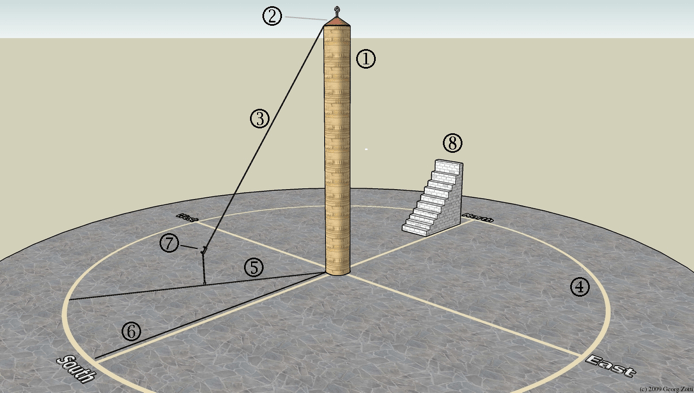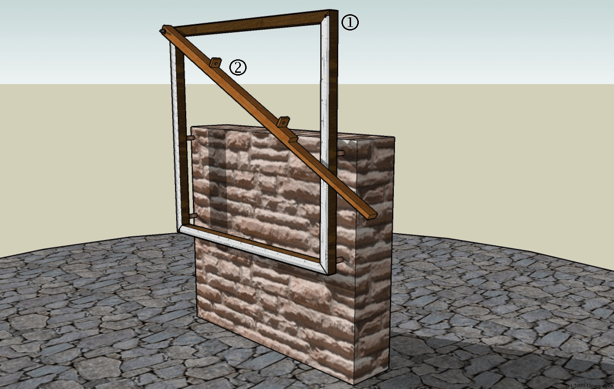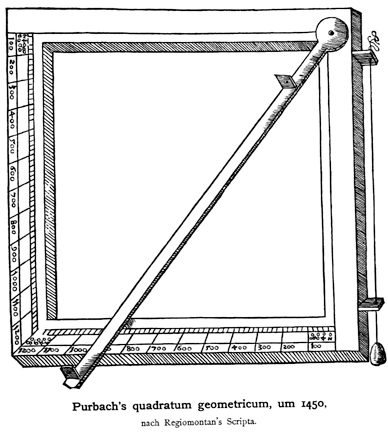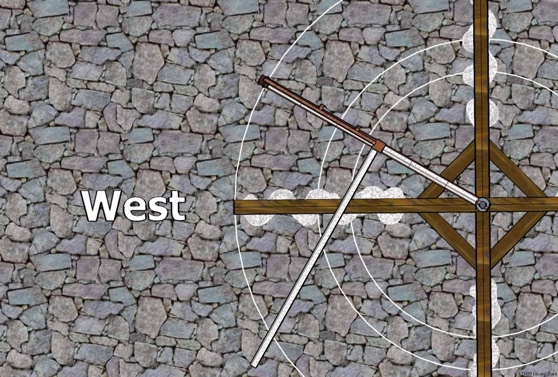The present paper introduces, investigates, analyses, and comments on an anonymous treatise in Persian named al-Risāla al-Ghāzāniyya fi ’l-ālāt al-raṣadiyya, “Ghāzān’s (or Ghāzānid) treatise on the observational instruments”, which describes the structure, construction, and functions of twelve “new” observational instruments in the medieval period that appear to have been proposed and invented during the reign of Ghāzān Khān, the seventh Ilkhan of the Ilkhanid dynasty of Iran (21 October 1295–17 May 1304). In the sections below we consider the treatise in the light of two issues: (1) the assumption that the primary historical sources may contain interesting notes and claims concerning Ghāzān Khān’s astronomical activities and especially the new observatory that he founded in Tabriz, and (2) the fact that at present there are hardly any sound and historically reliable accounts of the activities of the Maragha Observatory from around 1280 onwards. It is thus essential to explore the issues that constitute the principal historical features of the research, i.e., Ghāzān, the Maragha Observatory, and astronomical activities, and to clarify the contextual relations between them. In what follows we present the key historical facts (derived from the primary sources) regarding Ghāzān and his connection to both astronomy and the Maragha Observatory. Second, we describe the Maragha Observatory in the period in question, giving further details about the observational programs conducted there and noting the substantial differences between them. These data cast new light on the activities of the observatory and, as we shall see below, may challenge the established history. We then examine the treatise, its contents, the manuscripts available, and the original approach applied to the design and construction of the instruments. In the final section, we examine the notes (and the possible misunderstandings as well) deduced from the treatise as regards the instruments, their physical construction, and their relation to Ghāzān and the Maragha Observatory. The section also contains two open discussions on the only possible archaeological evidence for the instruments and the authorship of the treatise. The most important evidence is, of course, provided by the instruments themselves and the new approach applied to their design and construction, which we discuss in the second part of the paper along with a classification of the different types of the instruments. We describe the configuration and functions of each instrument separately. These two sections are based on the text; a few changes in the order and arrangement of the materials are introduced to give a fuller account of each instrument in relation to the original text. These are followed by a separate section containing critical comments on the instrument with regard to either technical or historical considerations, including critical remarks such as probable mistakes or omissions in the treatise and some suggestions for corrections and completions, an analysis of our author’s claim concerning the superiority of a new instrument over its precursors, the applicability of each instrument, the comparison of a new instrument with similar historical counterparts, and so on.


The Observational Instruments at the Maragha Observatory after AD 1300
***
Note of Editor: This paper appeared for the first time in Suhayl: International Journal for the History of the Exact and Natural Sciences in Islamic Civilisation, Vol. 12 (2013), pp. 45-179. The PDF can be retrieved online via this link (Archived).
***
Ghāzān Khan, the seventh Ilkhan of the Ilkhanid dynasty of Iran (r. 21 October 1295–17 May 1304), was described by his Iranian Vizier, Rashīd al-Dīn Faḍl-Allāh (645 H / 1247 AD – 718 H / 1318 AD),[1] as being interested in theology, a prominent artisan (in gilding, blacksmithing, carpentry, painting, molding, and turnery), an alchemist, an expert in medicine and botany who invented a new antitoxin called Tiryāq-i Ghāzānī, Ghāzān’s Antidote, and a mineralogist.[2] The primary historical sources[3] also contain references to his activities and skills in astronomy (especially in the field of observational instrumentation) and about the observatory he founded in Tabriz.[4]
Since the treatise studied here is directly related to Ghāzān Khān (it bears his name in the title, he is explicitly mentioned in the prologue, and we are told that the twelve new instruments appeared during his reign, etc.), we start by examining the historical materials connected to his astronomical activities.
The writings of Rashīd al-Dīn, contain two interesting fragments regarding Ghāzān’s astronomical interests (the Persian texts are in Appendix 1). They belong to two different contexts. In the first it is told that Ghāzān, after returning from the first war against the Mamlūk sultan of Egypt and Syria, stayed in Maragha from 15 Ramaḍān until some time before 24 Shawwāl 699 H (4 June–before 13 July 1300 AD).[5] According to Rashīd al-Dīn, Ghāzān arrived in Maragha on Saturday, June 4th, and
“On the next day [i.e., June 5th], he went to watch the observations; he looked at all the operations (a‘māl) and instruments, studied them, and asked about their procedures, which he understood in spite of their difficulty. He gave orders for the construction of an observatory next to his tomb in Abwāb al-Birr [in the district] of al-Shām in Tabrīz[6] for several operations. He explained how to perform those operations with such clarity that local wise men marveled at his intelligence, because such work (‘amal) had not been done in any era. Those wise men said that constructing it [the observatory] would be extremely difficult. He guided them, whereupon they commenced building it and they finished it following his instructions. Those wise men and all the engineers agreed that nobody had done such a thing before nor had imagined doing it.”[7]
The second fragment is from the context in which Rashīd al-Dīn speaks of Ghāzān’s skills and devotes a separate section to each one. In the paragraph on astronomy, we read:
“[1] On several occasions he [= Ghāzān] went to Marāgha, asked for an explanation of the instruments there, examined their configuration (kayfiyya) carefully, and studied them. He had a general idea of them. [2] As per his nature (tab‘), everything having to do with the siting (waḍ‘) and the building (‘imārat) of the [Marāgha?] observatory he commanded to construct [3] And, as per his nature, he also erected a dome in order to investigate the Sun’s motion and he spoke out with his astronomers about it. [4] All of them said that although we never have seen such an instrument, it is reasonable/sensible. [5] In the observatory next to Abwāb al-Birr in Tabrīz, a dome has been constructed that contains these things (“ma‘ānī” lit. purports), as can be seen.”[8]
In the first quote it is reported that Ghāzān ordered unprecedented “operations” after visiting the Maragha Observatory and seeing the astronomical procedures performed there at the time. The new “operations” or “work” must have involved the new observatory that Ghāzān commissioned in Tabriz (1300 AD). We do not know exactly what these operations were, or whether or not they were related to Ghāzān’s hemispherical instrument for solar observations, or how they differed from those carried out by his recent predecessors, especially the scholars who set up the Maragha observatory and worked in it for four decades before his visit. (In general, nothing is known about the activities of the Tabriz observatory and their results.) Even though the fragment is subject to the panegyric praise of a vizier for his sultan, two facts nonetheless emerge from it: first, the proposal to conduct new astronomical operations is attributed to Ghāzān (though no details are given); second, the Maragha observatory was active and alive at that time, and a number of astronomers and engineers were working there.[9] It is also understood that the operations carried out there were so extensive that an interested ruler was forced to devote a good deal of time to watching and/or learning them.
In the second quote, a tentative familiarity with the Persian language is enough to verify that the word “Observatory” in the second sentence, i.e., [2], refers back to “Maragha” in the first sentence, i.e., [1]. In addition, when, in sentence [5] Rashīd al-Dīn wants to speak of the new observatory of Ghāzān in Tabriz, he refers to it with the complete name as “the observatory next to Abwāb al-Birr in Tabrīz”. (In other words, if one assumes that the word “observatory” in the sentence [2] alludes to the “Tabriz Observatory” in the fifth sentence, then it is not clear why in the fifth sentence, Rashīd al-Dīn needed to mention the complete name of the Tabriz Observatory and indicate its location. In this quote, all that is said about the Tabriz Observatory is the construction of a dome (a hemispherical instrument) for the solar observations (sentences [3]–[5]). Now, based on our opinion that the word “observatory” in the second sentence refers to Maragha in the first sentence, on the strength of a straightforward reading of the full passage the phrase “everything having to do with the siting and the building of the [Marāgha] observatory he commanded to construct” becomes significant; it refers generally to the “materials” of the Maragha Observatory, which may include the new buildings and architectural structures, renovating the old ones that had been built some 40 years before and their superstructures, the instruments, and so on.
Therefore, as seen above, the primary historical sources establish a clear relationship between Ghāzān, the Maragha Observatory, and astronomical activities. From a historical perspective, there is no reason to doubt that Ghāzān paid attention to astronomical activities and, although he had founded a new observatory in his capital, he certainly did not neglect the Maragha Observatory. However, what the “operations” were or what Ghāzān constructed in the observatory is unclear. As we shall see below (Section 3), Ghāzān’s or the Ghāzānīd treatise substantiates the historical claim to a large extent, by establishing a clear link between Ghāzān and observational instruments.
This study was originally intended as an overview (including the translation of certain phrases, whenever necessary) of an anonymous Persian treatise on the observational instruments of the second period of the Maragha Observatory, the construction of which was proposed during the reign of Ghāzān Khān and which was most probably built at that time.
We have created virtual reconstructions of the instruments following the text as closely as possible. We have found several inconsistencies which must be copying errors in all the extant copies of the treatise accessible to us. With a few corrections, the instruments could be shown to work. It appears that some instruments, if made of copper, would have been barely usable due to the large size required to achieve a satisfactory degree of accuracy. One instrument, #12, seems to be the first pinhole device specifically described for solar eclipse observations. On the other hand, the author disregards the recommendations of his precursor, al-cUrḍī, not to use ropes for measuring lengths.
For the other sections please see main paper:


Double Circular Trace, one of the five circular traces around the central building of the Maragha Observatory, located to the southwest of it.


Figure: Instrument #1: (top) Mathematical principle. – (bottom) Instrument reconstruction.


Figure: (a) Virtual reconstruction of Instrument #2: (1) Iron Shaft (2) Diagonal Rules (3) Side Rule (4) Azimuth Rule (5) Perpendicular Rule (6) Chord Rule (7) Alidade.


Virtual reconstruction of Instrument #3: (1) Great Circle (2) Great Cylinder (3) Azimuth Rule (4) Alidade (5) Chord Rule.


Virtual reconstruction of Instrument #3


Virtual reconstruction of Instrument #3


Virtual reconstruction of Instrument #3


Virtual reconstruction of Instrument #3


Virtual reconstruction of Instrument #3


Virtual reconstruction of Instrument #3


Measuring azimuth (lateral view); the alidade is still shown in an elevated position, but would usually hang down vertically. The wooden block supporting the Azimuth Rule (with the chord rule indicating azimuth by a nail) is not documented, but is a functional requirement.


The instrument #5 as illustrated in MS. S. Note that this instrument cannot actually be built following this schematic configuration. The fiducial triangle’s vertical edge must be carried along the pillar wall.


Instrument #5: (1) Pillar (2) Cone (3) First KhayÐ (4) Indian Circle (5) Second (Shadow) KhayÐ (6) Third KhayÐ (7) Alidade (8) Steps. A fiducial triangle is formed by the point where the First KhayÐ bends around the top cone, the ring on the Base Ring where Second and Third KhayÐ are attached, and the alidade endpoint, where the plumb line goes down to the ground


Instrument #5. (a) Top of the pillar, showing (1) Top Ring, (2) Kawkabah-shaped shaft, and (3) the KhayÐ bending at the roof corner.




Figures: Base Ring, where on a small ring the two KhayÐs for measurements are attached. The moving ring was either in the ground next to the pillar, or around its base.


Virtual reconstruction of Instrument #6.


Virtual reconstruction of Instrument #7: (1) Square (2) Alidade.


Instrument #7, early 14th ct. AD (S: fol. 36v)


Peuerbach’s Quadratum Geometricum, mid 15th ct. AD [Schöner 1544, fol. 62v]


A movable model by Tycho Brahe [Brahe 1602, fol. B3|B4] [Barrettus 1666, Proleg., p. cxvii]


Virtual reconstruction of Instrument #8: (1) First Square (2) Iron Shaft (3) Second square (4) Wooden Framework (5) Alidade.


Instrument #9. (1) Double Pillar (2) Alidade (3) Chord Rule (4) Single Pillar (5) Pulley. The form of the ladder is not documented.


(a) Virtual reconstruction of Instrument #10: (1) Sine Rule (2) Versine Rule (3) Alidade (4) Catgut.


Virtual reconstruction of Instrument #11. (1) Meridian Rule (2) East-West Rule (3) Iron Shaft (4) Supportive Rules (5) Versine Rule (6) Sine Rule (7) Alidade (8) Pipe. To measure the altitude, the Sine Rule was shifted to touch the alidade (cf. Figures 18a and 18b).




Instrument #11: To determine the azimuth, the Sine Rule was laid on the ground (a) and shifted to the end of the East-West Rule (b).


Virtual reconstruction of Instrument #12: (1) Great Pinnula (2) Small Pinnula (3) Rule (4) Base/Support: the support construction is shown following al-cUrḍī’s description of the dioptra.
Footnotes
[1] [Rashīd al-Dīn, History, Vol. 2, pp. 1331–41]; also see: [Sayılı 1960, p. 227].
[2] Furthermore, his attempts to introduce widespread political and social reforms in Iran, which had been devastated during seven decades of Mongol rule, establish him as a different kind of ruler. He was baptized a Christian. In his youth he was instructed by Buddhist Mongol monks (Bagshī in Mongolian language and Bakhshī in Persian). He converted to Islam after ascending the throne.
[3] Primary sources for this period are: (1) Rashīd al-Dīn Faḍl-Allāh al-Hamidānī, Jāmic al-Tawārīkh (The Perfect[compendium] of Histories) [1994, 2, pp. 1205ff]. Rashīd al-Dīn was Ghāzān Khān’s vizier after 699 H/1300 AD. (2) Banākitī’s History [1969] by Fakhr al-Dīn Abū Sulaymān Dāwūd b. Tāj al-Dīn Abu-al-Fadl Muhammad b. Dāwūd al-Bānāktī, Prince of Poets at Ghāzān Khān’s court. (3) Waṣṣāf’s History written by cAbd-Allāh Waṣṣaf al-ḤadrahAl-Nīshābūrī, who dedicated his work to Ghāzān on 3 March 1303 supported by two of his viziers (the abovementioned Rashīd al-Dīn and Sacd al-Dīn Mustawfī al-Sāwujī); for one of its editions see: [Waṣṣāf 1967]. For other important sources see: Ḥamd-Allāh Mustawfī’s Tarīkh-i Guzīdih (written 730 H / 1329-30 AD) [1960], Mīrkhānd’s Tārīkh-i RawÞa al-Ṣafā (written 1434/4–1497/8 AD) [2002], and Khāndmīr, Ḥabīb al-Sīyar [1954].
[4] The data are compiled in [Sayılı 1960, pp. 224–232].
[5] See: [Rashīd al-Dīn, History, Vol. 2, p. 1296]; Banākitī [History, p. 463] says nothing about his order to construct the Tabriz observatory; Khāndmīr [Ḥabīb al-Sīyar, 3, p. 154] says that Ghāzān lingered on in Maragha until Dhu-al-hijja 699/September 1300, but according to Rashīd al-Dīn, the king left Maragha for an Imperial council (Kurultai) on Tuesday 24 Shawwāl/13 July in Ujān.
[6]A rural area south of Tabriz where Ghāzān built a gigantic dodecahedral tomb and 12 social and scholarly institutes (including the observatory) around it during 16 Dhu-al-ḥijja 696–702 H (= 5 Oct 1297–1302/03 AD). See: [Rashīd al-Dīn, History, Vol. 2, pp. 1377–84]; [Waṣṣāf, History, pp. 229–231]; [Sayılı 1960, p. 226]. Ghāzān himself draws the plan of this complex [Rashīd al-Dīn, History, 2: 1376].
[7] [Rashīd al-Dīn, History, Vol. 2, p. 1296].
[8] [Rashīd al-Dīn, History, Vol. 2, p. 1340]; cf. [Sayılı 1960, p. 228].
[9] One referee speculates that at that time the Ilkhanid astronomical activities were centered in Tabriz. Although, as we shall see below, a certain Shams al-Bukhārī (probably, Shams al-Dīn Muhammad al-Wābkanawī al-Bukhārī) worked in Tabriz for a while in the 1290s (about him, see below), no observatory or the astronomical institute had yet been established in Tabriz. (The Tabriz Observatory, as the first quote above indicates, was founded in 1300 AD.) Shams al-Bukhārī performed some observations individually (the 1293–6 eclipses) or invited some foreign scholars (like Gregory Chioniades) to teach astronomy. After Ghāzān ascended the throne, by an imperial order (yarlīq), he instructed Wābkanawī, the most important astronomer of this period, who was officially an astrologer and connected to Ilkhān’s court, to compile a new zīj. There is a table of parallax for the latitude of Tabriz (φ = 38°) in Wābkanawi’s zīj, but the other tables of the zīj are based entirely on the latitude of Maragha (φ = 37;20°). Some observations mentioned in the zīj (e.g., the lunar observation in 1272 AD and the observation of the triple conjunction of Saturn and Jupiter in 1304–5) show that Wābkanawī was in Maragha before and after his presumably temporary settlement in Tabriz. In any case, it suffices to say that the data available do not allow us to conclude that astronomical activities during the period of Ghāzān’s reign were essentially centered in Tabriz.
by Mohammad Mozaffari1 and Georg Zotti2
1 Research Institute for Astronomy and Astrophysics of Maragha, Maragheh University, Iran (ORCID ID: 0000-0001-8677-8718)
2 Ludwig Boltzmann Institute for Archaeological Prospection and Virtual Archaeology, Austria (ORCID ID: 0000-0002-8152-0408)
4 / 5. Votes 1
No votes so far! Be the first to rate this post.
Muslim Heritage:
Send us your e-mail address to be informed about our work.
This Website MuslimHeritage.com is owned by FSTC Ltd and managed by the Foundation for Science, Technology and Civilisation, UK (FSTCUK), a British charity number 1158509.
© Copyright FSTC Ltd 2002-2020. All Rights Reserved.
